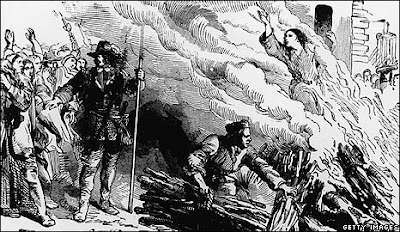Thursday, September 30, 2021
The Catholic New American Bible on This Day in History
Wednesday, September 29, 2021
The Tylenol Murders on This Day in History
Tuesday, September 28, 2021
Thomas Crapper and the Toilet on This Day in History
Monday, September 27, 2021
The Warren Commission & the JFK Assassination on This Day in History
Sunday, September 26, 2021
The Death of the Segway, and its President on This Day in History
Saturday, September 25, 2021
Led Zeppelin Drummer John Bonham on This Day in History
Friday, September 24, 2021
Gothic Horror Writer Horace Walpole on This Day in History
Thursday, September 23, 2021
Two Forgotten Giants of Literature on This Day in History
Wednesday, September 22, 2021
Witches and Unitarians on This Day in History
Tuesday, September 21, 2021
Automobile Visionary Preston Tucker on This Day in History
Monday, September 20, 2021
The Sinking of the White Star Line's "Olympic" on This Day in History
This day in history: The White Star Line ship RMS Olympic collided with the British warship HMS Hawke on this day in 1911. The White Star Line, a British shipping company, also owned the Titanic, which would famously sink months later in April 1912. These are actually two of many mishaps the White Star Line would have. Their RMS Tayleur, described as "the first Titanic", sank on her maiden voyage in 1854. Of more than 650 aboard, only 280 survived. The SS Royal Standard hit an iceberg in 1864. The RMS Atlantic sank in 1873, killing 562 passengers. The RMS Republic collided with another ship in 1909. This ship was equipped with a new Marconi wireless telegraphy transmitter, and issued a CQD distress call, resulting in the saving of around 1,500 lives. The HMHS Britannic suffered an explosion on 1916 with a loss of 30 lives. The SS Naronic went missing in 1911.
Despite all of this, the White Star Line still prospered.
Also, on September 20: The steamboat Dean Richmond collided with the steamboat Cornelius Vanderbilt and sank in the Hudson River at Rondout, New York with the loss of two of her 150 passengers and crew in 1867.
The Fanny collided with the steamship Colombia and sank in the River Mersey with the loss of four of her crew in 1866.
The Challenge was reported missing in 1876 and never seen again while travelling from Ireland to Brazil.
The British Lady was run into by the steamship Risca in 1871 off Porthcawl, Glamorgan (Wales) and was severely damaged.
The Falcon was run into by the steamship Rotterdam at Harwich, Essex in 1871 and was beached.
The RMS Queen Elizabeth 2 was launched in Clydebank, Scotland in 1967.
Singer Jim Croce, songwriter and musician Maury Muehleisen and four others died when their light aircraft crashed on takeoff at Natchitoches Regional Airport in Louisiana in 1973.
At least 161 people die after a ferry capsized close to the pier on Ukara Island in Lake Victoria and part of Tanzania in 2018.
See also: Mysteries of the Sea - 200 Books on DVDrom
Maritime Superstitions by H.R. Woestyn 1906
The Sea and its Legends by Benjamin Taylor 1900
The Mystery of the "Mary Celeste" by John E Watkins 1919
The Flying Dutchman and Other Legends of the Sea 1897
The Phantom Ship by Elliott O'Donnell 1911
The Story of the Haunted Ship by Wilhelm Hauff 1890
Sunday, September 19, 2021
The Secondhand Lions Movie on This Day in History
Watch Secondhand Lions for FREE on Tubi
Saturday, September 18, 2021
United States Capitol on This Day in History
Friday, September 17, 2021
The Offensive US Constitution on This Day in History
Thursday, September 16, 2021
Railroad Tycoon James J. Hill on This Day in History
Wednesday, September 15, 2021
The Queen of Crime, Agatha Christie, On This Day in History

















